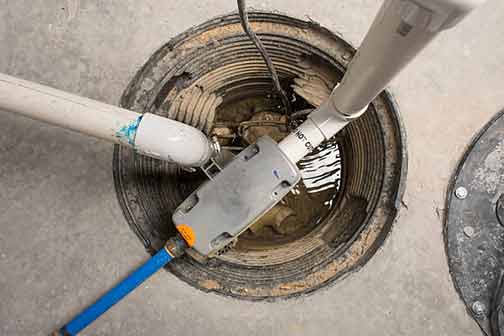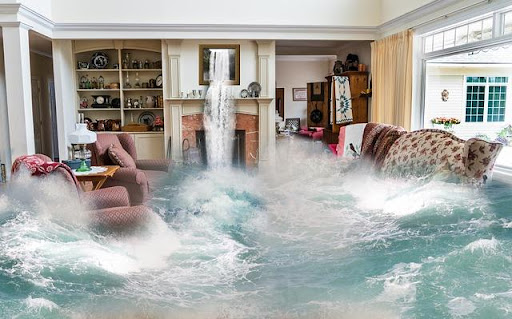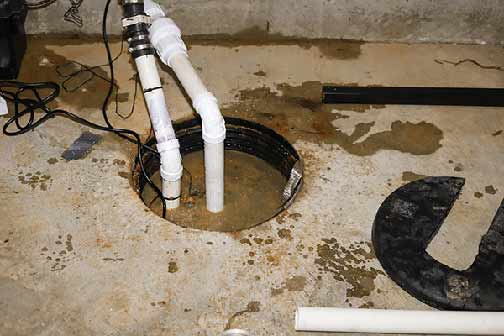
Sump pump malfunctions rank among the top ten causes of the worst flooding in homes. Any flooding in your home will cause severe emotional pain and financial loss. But the pain is worse when that flooding is from a sump pump failure. That is because the entire purpose of having a sump pump in your home is to prevent flooding.
Sump pumps are designed to keep protecting your home after other flood defenses have failed. Most of a home’s flood defenses are located outside; to keep water from entering the house. But the sump pump is located inside the building. If floodwaters elude the other flood defenses and enter the home, the sump pump removes the water.
But sometimes, this does not happen because the sump pump fails. Real Property Group Company says most sump pump failures will go undetected by the homeowner. Homeowners only become aware of the issues with the sump pump after their home has been flooded. What is the point of installing a sump pump in your home if you cannot sleep knowing that your home is protected from floods?
The good news is there are ways to prevent sump pump failure. You can prevent basement flood damage by early detection of problems in your sump pump. This post explains the simple steps to ensure your sump pump is always functional. These suggestions work best if you have a schedule for doing all the checks at predetermined times during the year.

Sump pumps are designed to keep protecting your home after other flood defenses have failed.
Common sump pump problems and how to solve them
Power failure
Electrical problems cause more sump pump failures than mechanical issues. These electrical problems can be due to power outages during stormy weather. They can also be due to negligence, such as when someone unplugs the sump pump or accidentally shuts off the circuit breaker. Problems in a home’s electrical wiring may also cause sump pump failure. Routine checks to ensure the sump pump is plugged in and getting power will help you avoid this problem.
Float switch problems
A malfunctioning float switch is the second most common cause of sump pump failure. Float switch problems happen because the pump has shifted inside the pit, the float is stuck, or debris is interfering with it. To test the float switch, fill the pit with water and watch to see if the float switch will trigger the pump and switch it off at the right time. To avoid float issues, ensure the pit is clean and the pump is positioned properly.
Clogged or frozen discharge lines
If the discharge line is frozen or clogged, water will not flow to the designated discharge point. Instead, it will flow backwards, down the line and into the basement. That will make the sump pump overwork, which can burn the motor. Installing a grated covering on the end of the discharge line will keep debris out. To prevent freezing, use sturdy PVC pipes, make sure the discharge line has a good slope and install a pop-up drain in your yard.
Check valve failure
The check valve is a one-way valve that prevents discharged water from back-flowing into the sump pump. It is often located in the vertical portion of the discharge line, close to where it connects to the sump pump. A damaged check valve will keep your sump pump cycling on and off continuously. The check valve will make a noise or vibrate if it is broken. A damaged check valve should be replaced.
Undersized sump pit or sump pump
Your home will be vulnerable to flooding if the sump pit is inadequate for the amount of water that enters the basement or if the sump pump is too small. Make sure your sump pit and sump pump match the requirements of your home. If the sump pump is too small for your home, it will overwork. That will lead to your sump pump motor burning out. It will also make it prone to a lot of other issues.

If the sump pump fails, a water alarm will emit a loud sound to alert you. An internet-enabled water alarm is better because it can alert you via email, SMS, or app notifications.
Failsafe methods to protect your home from flooding
Water alarms
If the sump pump fails, a water alarm will emit a loud sound to alert you. An internet-enabled water alarm is better because it can alert you via email, SMS, or app notifications.
Redundant sump pump
A redundant sump system uses two sump pumps in the same sump pit. If one of the sump pumps fails, you can rely on the other one to keep your home safe.
Battery-powered sump pump
A battery-powered sump pump will work even when there is a power outage. Since power outages typically coincide with heavy rainfall, a battery backup installation of your sump pump is highly recommended.
To conclude, one of the best ways to ensure that your sump pump performs as expected is to have an expert install the system. The risk of sump pump failure can be halved by proper installation. It is also a good practice to have a plumber do a thorough inspection of your sump pump system periodically.
